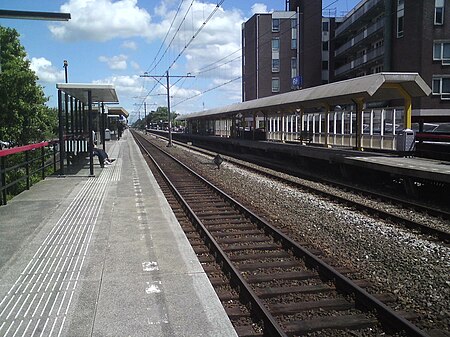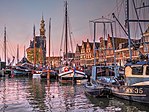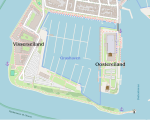Hoorn Kersenboogerd railway station
HoornPages with Dutch IPAPages with no open date in Infobox stationRailway stations in North HollandRailway stations in the Netherlands opened in the 1980s ... and 1 more
Railway stations opened in 1986

Hoorn Kersenboogerd (Dutch pronunciation: [ˌɦoːr(ə)ŋˌkɛrsə(m)ˈboːɣərt]) is a suburban railway station, in the Kersenboogerd district in Hoorn, Netherlands. The station opened on 29 May 1983, and is on the Zaandam–Enkhuizen railway. About 1 km east of the station is a siding where the "stoptrein" (all-station service) to and from to Hoofddorp can be turned around. From this point the line to Enkhuizen becomes single track. The station is located in the east of Hoorn, and was originally referred to in the plans as Hoorn Oost.
Excerpt from the Wikipedia article Hoorn Kersenboogerd railway station (License: CC BY-SA 3.0, Authors, Images).Hoorn Kersenboogerd railway station
Bolwerk,
Geographical coordinates (GPS) Address Nearby Places Show on map
Geographical coordinates (GPS)
| Latitude | Longitude |
|---|---|
| N 52.653333333333 ° | E 5.085 ° |
Address
2
Bolwerk
1628 KR (Hoorn)
North Holland, Netherlands
Open on Google Maps









